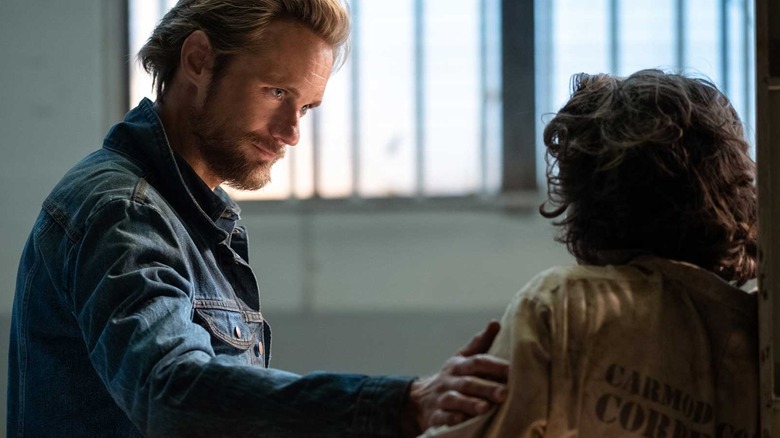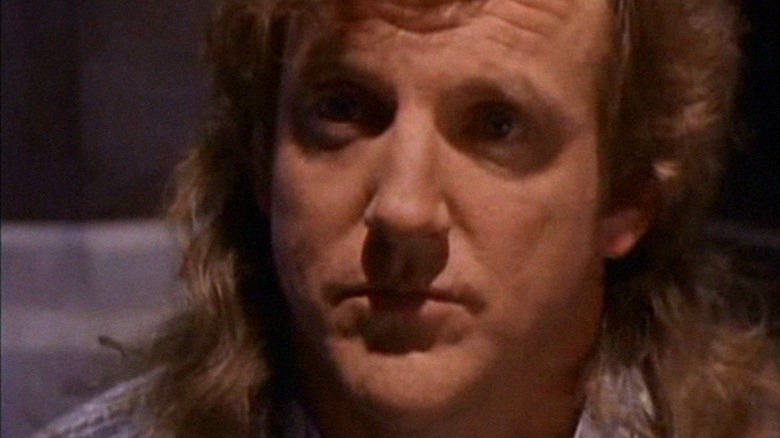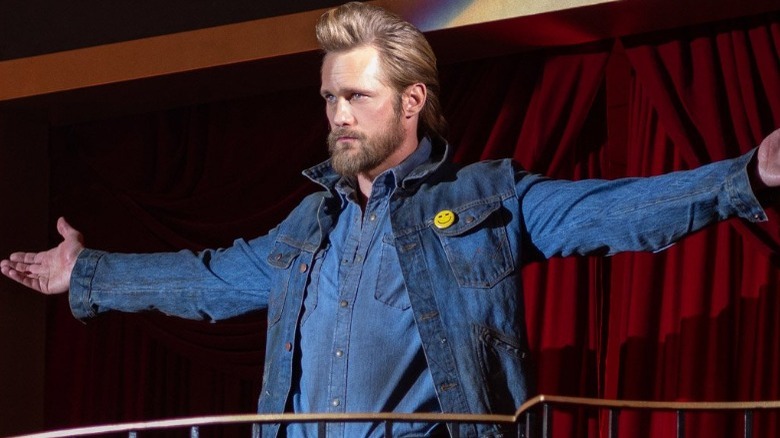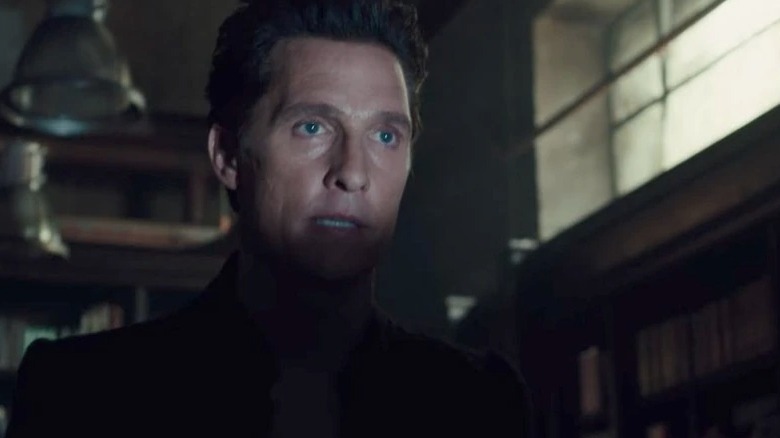The Many Faces Of Randall Flagg On Screen And Beyond
One of Stephen King's greatest villains goes by many names, including Walter o'Dimm, Russell Faraday, and even, simply, The Man in Black. Yet the seemingly immortal evil entity who appears and reappears several times across King's extensive bibliography is most often known by one name: Randall Flagg.
To date, the shadowy figure has appeared in at least nine of King's novel, plus three on-screen adaptations. Most recently, "The Northman" actor Alexander Skarsgard embodied the denim-clad drifter in the 2020 Paramount+ limited series adaptation of "The Stand." This take on King's doorstep of a classic novel wasn't particularly well-received, but it notably featured a finale written by King himself, adding yet another layer to the ever-growing mythology of Randall Flagg.
Introducing The Dark Man
Readers first met Flagg in the 1978 book version of "The Stand," which still stands as one of King's most popular and beloved works to date. It's also his longest, with a Complete and Uncut Edition weighing in at 1152 pages. It should come as no surprise, then, that the story is expansive, following a large cast of characters as they attempt to rebuild society in the wake of an influenza outbreak that decimates the global population. Eventually, Flagg becomes the sinister and violent leader of a Las Vegas-based group of survivors who fall under his supernatural influence.
First, though, Flagg appears to the flu survivors in dreams. Though details surrounding the character's appearance vary as he continues to show up in other King works, "The Stand" features a description that becomes the blueprint for his characterization for years to come. "Randall Flagg, the dark man, strode south on US 51," his introduction reads, describing a haunting figure moving in the night. King describes him as "a tall man of no age in faded, pegged jeans and a denim jacket," with "sharp-toed cowboy boots," pockets overflowing with conflicting political pamphlets, and "a button on each breast" of his jacket.
Soon, we learn that Flagg has unnatural tendencies, including a sort of supernatural charisma and an appearance that flickers between the human and the demonic. On screen, neither version of "The Stand" has quite captured his particular unnerving swagger. In Mick Garris' 1994 miniseries, the character is played by Jamey Sheridan, who wears a mane of long, curly hair and acid-washed jeans. Despite his cowboyish exterior, Sheridan's version of Flagg has the air of a politician about him. He's prone to dropping puns and breaking out into devilish grins, even as he's torturing his acolytes. This version of Flagg nails the character's sleazy charms, but is often too jokey to fully capture his intensity.
A villain reappears
On the other hand, Skarsgard's take on the character feels like a man out of time, but not in a way the story needs. The Swedish actor seems out of place with a slightly twangy accent and Flagg's Americana garb. His Flagg is clearly a wolf in sheep's clothing, but he never dons his human disguise well enough to convince audiences that he could be anyone's charismatic ruler. In a strange, King-written epilogue that caps off the new series, the character appears naked on a beach in front of an Indigenous tribe, reborn as Russell Faraday. "Worship me!" he screams to the tribe members after nonchalantly exploding one of their heads, and they bow down to him.
Flagg seems to have appeared in many forms over the decades, as devilish characters with his initials pop up in books like "The Eyes of the Dragon," "Hearts in Atlantis," and "Gwendy's Button Box." The author even recently took to Twitter to declare a possible connection between Flagg and his other most infamous villain, "IT" entity Pennywise the clown. But for many King fans, the definitive take on the character appears in King's densely constructed fantasy series, "The Dark Tower."
The Dark Tower's take on Flagg
Flagg's presence is felt from the very beginning of the series' first book, "The Gunslinger," which famously opens with the line, "The man in black fled across the desert, and the gunslinger followed." While the version of Flagg from "The Stand" is rooted in that book's time and place, this representation of the character is often shadowier, taking on disguises and appearing in various forms across many different worlds. Though Flagg often seems like the embodiment of pure evil, the series' final book reveals an all-too-human origin story for the character, whose seemingly endless quest for power has a centuries-old beginning.
Although Randall Flagg is one of the crown jewels in the master of horror's repertoire, he's yet to be brought to life in a satisfying way on screen. A film adaptation of "The Dark Tower" series released in 2017 felt doomed from the start as it attempted to cram the magic and mystery of seven books into just 95 minutes. In it, Matthew McConaughey played a version of Flagg called Walter Padick. The actor captures more of the character's mystery than any other screen version, donning a black suit and effortlessly commanding everyone he encounters with his spell-like words. Yet the film never so much as scratches the massive backstory of the famous character, instead turning him into a rote bad guy with a cool superpower.
Still, hope for a definitive on-screen take on Flagg shouldn't be lost. At 75 years old, King is still churning out new books, and Hollywood seems more inclined than ever to do his most classic works justice. Though no Randall Flagg-related projects currently seem to be in the works, the dark enchanter has popped up enough times by now that there's no doubt he'll be back soon enough — in one form or another.



